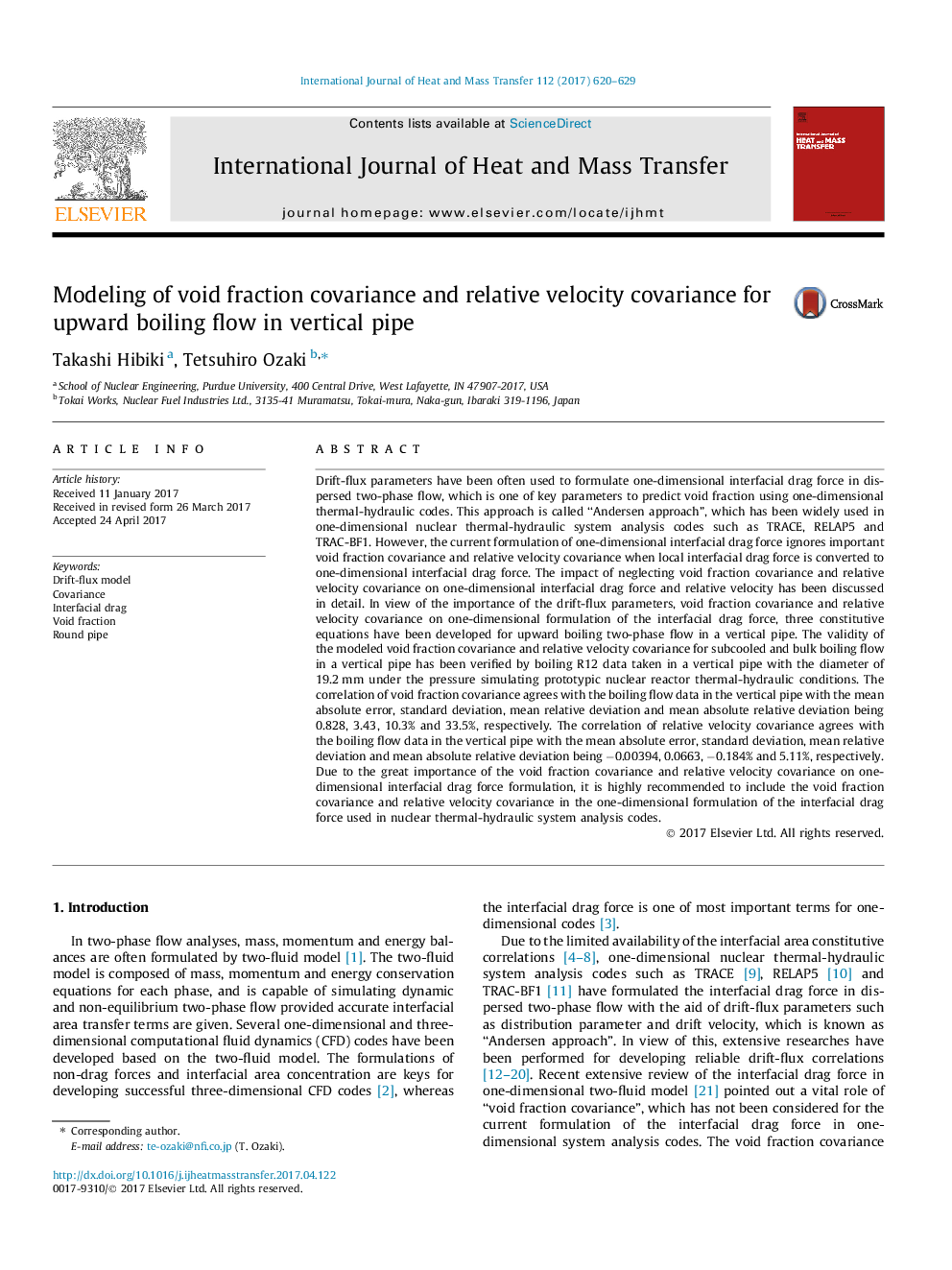| کد مقاله | کد نشریه | سال انتشار | مقاله انگلیسی | نسخه تمام متن |
|---|---|---|---|---|
| 4993686 | 1458029 | 2017 | 10 صفحه PDF | دانلود رایگان |
عنوان انگلیسی مقاله ISI
Modeling of void fraction covariance and relative velocity covariance for upward boiling flow in vertical pipe
ترجمه فارسی عنوان
مدل سازی کوواریانس کسری خالی و کوواریانس سرعت نسبی برای جریان جوش بالا در لوله عمودی
دانلود مقاله + سفارش ترجمه
دانلود مقاله ISI انگلیسی
رایگان برای ایرانیان
کلمات کلیدی
مدل رانش شتاب، کوواریانس، کشش بین فصلی، کسری خالی، لوله گرد
موضوعات مرتبط
مهندسی و علوم پایه
مهندسی شیمی
جریان سیال و فرایندهای انتقال
چکیده انگلیسی
Drift-flux parameters have been often used to formulate one-dimensional interfacial drag force in dispersed two-phase flow, which is one of key parameters to predict void fraction using one-dimensional thermal-hydraulic codes. This approach is called “Andersen approach”, which has been widely used in one-dimensional nuclear thermal-hydraulic system analysis codes such as TRACE, RELAP5 and TRAC-BF1. However, the current formulation of one-dimensional interfacial drag force ignores important void fraction covariance and relative velocity covariance when local interfacial drag force is converted to one-dimensional interfacial drag force. The impact of neglecting void fraction covariance and relative velocity covariance on one-dimensional interfacial drag force and relative velocity has been discussed in detail. In view of the importance of the drift-flux parameters, void fraction covariance and relative velocity covariance on one-dimensional formulation of the interfacial drag force, three constitutive equations have been developed for upward boiling two-phase flow in a vertical pipe. The validity of the modeled void fraction covariance and relative velocity covariance for subcooled and bulk boiling flow in a vertical pipe has been verified by boiling R12 data taken in a vertical pipe with the diameter of 19.2Â mm under the pressure simulating prototypic nuclear reactor thermal-hydraulic conditions. The correlation of void fraction covariance agrees with the boiling flow data in the vertical pipe with the mean absolute error, standard deviation, mean relative deviation and mean absolute relative deviation being 0.828, 3.43, 10.3% and 33.5%, respectively. The correlation of relative velocity covariance agrees with the boiling flow data in the vertical pipe with the mean absolute error, standard deviation, mean relative deviation and mean absolute relative deviation being â0.00394, 0.0663, â0.184% and 5.11%, respectively. Due to the great importance of the void fraction covariance and relative velocity covariance on one-dimensional interfacial drag force formulation, it is highly recommended to include the void fraction covariance and relative velocity covariance in the one-dimensional formulation of the interfacial drag force used in nuclear thermal-hydraulic system analysis codes.
ناشر
Database: Elsevier - ScienceDirect (ساینس دایرکت)
Journal: International Journal of Heat and Mass Transfer - Volume 112, September 2017, Pages 620-629
Journal: International Journal of Heat and Mass Transfer - Volume 112, September 2017, Pages 620-629
نویسندگان
Takashi Hibiki, Tetsuhiro Ozaki,
